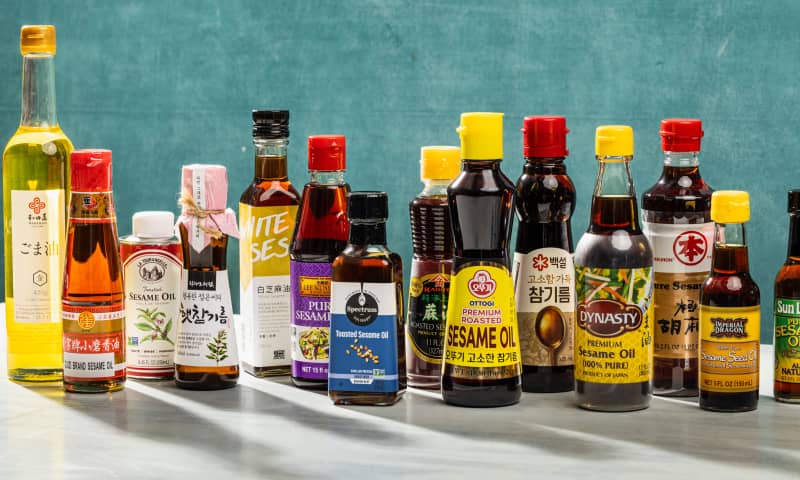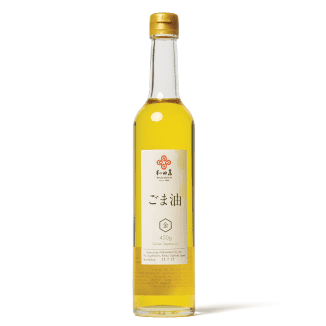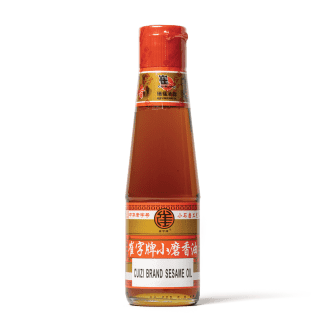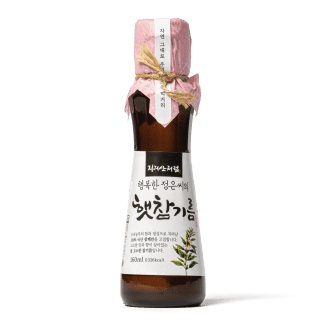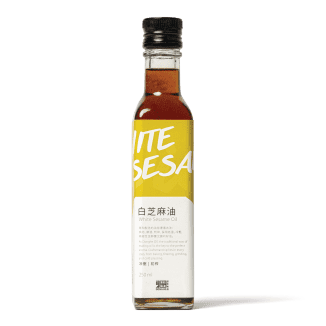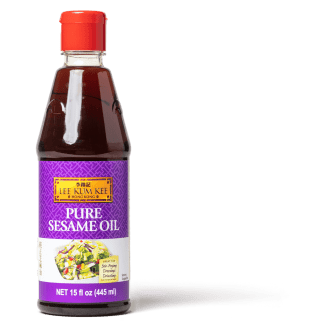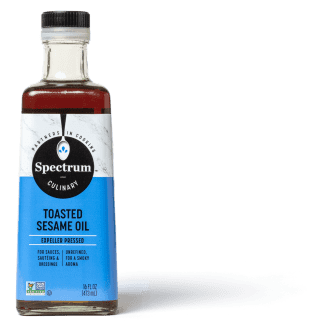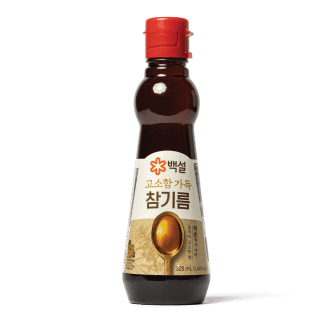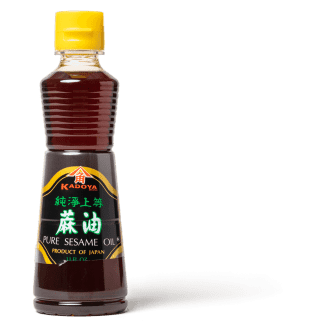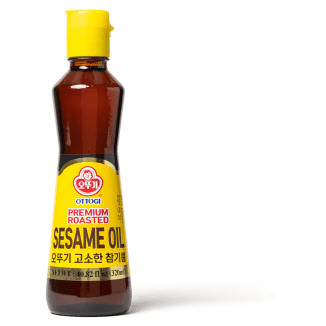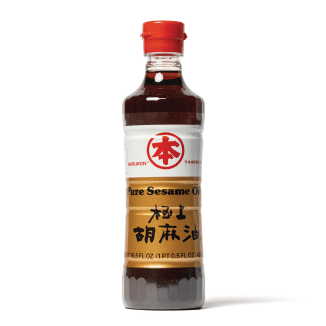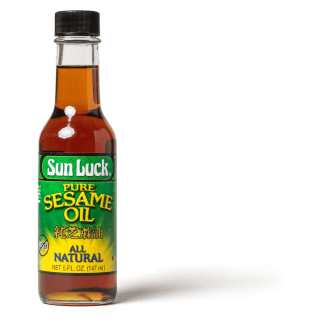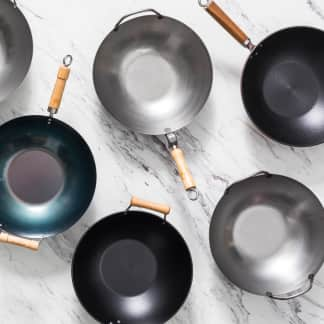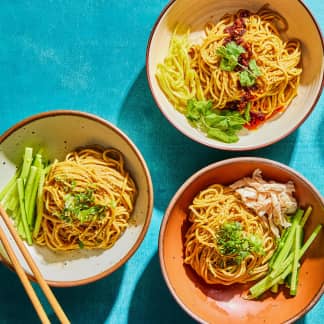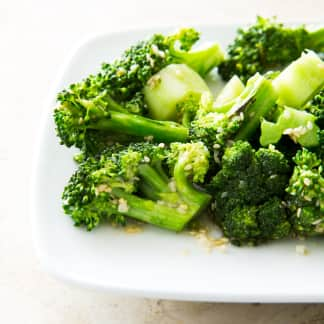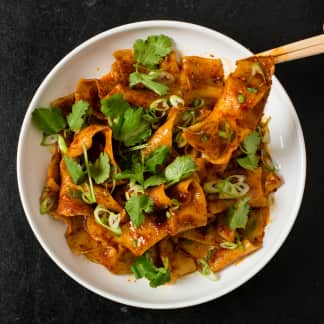Toasted sesame oil is a pivotal ingredient. Just a teaspoon or two in a sauce, or drizzled on at the end of cooking, adds a burst of distinctive rich, toasty, nutty flavor. The oil is a component of a wide range of beloved Korean, Japanese, Chinese, Taiwanese, and Hawaiian dishes, among others, from Liang Mian to Japchae, Pai Huang Gua to Mapo Tofu, and ramen to poke. It’s used to dress banchan and salads; it’s part of the marinade for bulgogi; and it’s the final touch for fried rice, stir-fries, stews, and braises such as San Bei Ji (Three-Cup Chicken).


Toasted sesame oil adds nutty, toasty, rich flavor notes in a wide variety of dishes including Liang Mian and Japchae.
“We use sesame oil like Americans use Diamond Crystal Kosher Salt; a little bit too liberally and at the end of the cooking process,” writes Clarissa Wei in her James Beard Award–nominated cookbook, Made in Taiwan: Recipes and Stories from the Island Nation (2023).
Sesame oil comes from the seeds of the Sesamum indicum plant, native to Africa and India; today most sesame is grown in China, India, Myanmar, Tanzania, and Sudan. It’s a hardy flowering plant that grows well even in dry regions. The seeds, which grow in pods, contain more than 50 percent oil. Because that oil is easy to extract, sesame is one of the oldest sources of cooking oil in the world. The earliest known sesame cultivation can be traced to the Harappa civilization in India, “date(ing) back to 3,000 or 3,500 BCE,” said sesame scholar Dorothea Bedigian.
Sesame Oil: Plain versus Toasted
There are two main types of sesame oil—plain and toasted—and they are not used the same way. Plain sesame oil (also called refined sesame oil) is pressed and processed using raw sesame seeds. This oil has almost no color, flavor, or scent, but it does have a high smoke point, which makes it useful for frying. Toasted sesame oil is made from roasted sesame seeds. This gives the oil an amber-brown color and a nutty scent and taste but a low smoke point.

As a result, toasted sesame oil is not good for high-heat cooking. Any aromatic quality will dissipate, and because the seeds were already toasted, further heating can make it taste burned. “Treat [toasted] sesame oil like you treat good olive oil,” said Rich Wang, chef/owner of Minyoli restaurant in Chicago. “Of course you can cook with it, but you’ll just waste the money.” Used as a finishing oil, “a little goes a long way,” advised Andrea Nguyen, James Beard Award–winning Vietnamese American food writer. “It can be very heavy and overwhelming if you use too much of it.”
While there are a few varieties of sesame seeds, “especially if you buy Korean or Japanese oil, it’s almost always made from toasted white sesame seeds, even if they don’t specify,” said Wang. “White seeds have a thinner husk and more oil content.” Some oils are made from black or golden seed varieties. “They all have different flavor profiles,” said Chris Bonomo, co-founder of The Japanese Pantry. White sesame seeds are the most familiar, with grassy, nutty notes; golden seeds have more fat and fragrance with a hint of sweetness, while black seeds tend to be the most intensely flavored, with a slight bitterness.
How to Make Cold Sesame Noodles 麻醬拌麵
This refreshing Chinese dish can be on your dinner table in under 30 minutes.Black sesame seed oil has a special use, Wang noted. “In Taiwan, there’s a school of cooking meant to be therapeutic. Chinese medicine believes that black sesame oil has a more warm quality, and is healing and medicinal. There’s a recipe called Sesame Oil Chicken that you eat the month after you give birth, and it’s considered super healing.” We didn’t include black sesame oil in this story because it’s used differently. Golden (also called yellow) sesame seeds are the most unusual to find in toasted oil, though they’re used by a few artisan makers including Wadaman, whose golden-seed oil is in our lineup.
Choosing Toasted Sesame Oil
We bought a variety of toasted sesame oils produced in Japan, China, Korea, and Taiwan, including big commercial brands from supermarkets and small artisan products from specialty retailers. Our tasters described flavors that ranged from “delicate” and “mellow,” “nutty, toasty, tasty,” and “a touch smoky,” with an “almost oaky or bourbon quality,” to “intense,” slightly “bitter,” or even “burnt.” Why the difference? Roasting time and temperature have the biggest impact on sesame oil’s flavor, color, and scent, experts say. After roasting, how the seeds are pressed and filtered before bottling also can affect flavor but to a much lesser extent.

Just as when nuts or coffee beans are roasted or bread is toasted, heat kicks off the Maillard reaction, which creates new flavor compounds and turns sesame seeds deep golden brown. Each maker has proprietary techniques. As roasting time and temperature increase, this develops more than 240 volatile aroma and flavor compounds in sesame seeds, including a class of compounds called pyrazines, which provide desirable toasty, nutty flavors. It also develops other flavor and aroma compounds including phenols, which have the aroma of spice and smoke; furans, with meaty and roasted-coffee scents; and acetyl pyrroline, which evokes the smell of fresh bread, basmati rice, and buttered popcorn. When roasting continues at even longer times and higher temperatures, new flavors such as char or bitterness appear. Toasting levels give sesame oils a range of colors and flavors that influence how they perform in dishes. The pale color and “delicate” toasted quality of one oil we tried struck tasters as delicious when sampled plain, but some found it overly mild when it was served with noodles. Another oil was fierce when tasted plain, with bitter, burnt notes, but with food, tasters found only intense nuttiness and a hint of appealing char.



Artisan versus Supermarket Toasted Sesame Oil
Our tasters also noticed a general trend: Commercial products tended to feature more robust toasted flavor, while some artisan products were comparatively mild and subtle. Smaller companies such as Wadaman pride themselves on roasting finesse, tweaking temperatures and times with each small batch of seeds.
Different toasted sesame oils have their place, experts agreed. Nguyen chooses according to what she is cooking. “Sometimes I want that sesame hit,” she said, so she reaches for a darker toasted oil with big roasty flavor. For more subtle flavor, she chooses less-roasted oil.
“When it’s lightly toasted, [sesame oil] can have a luscious lightness. It kind of dances. It’s soft like a good cashmere sweater. Not thick and heavy,” she said.
We felt that each of the oils we tasted had something to offer, so we didn’t rank them. Instead, we listed them in approximate order of flavor intensity from delicate to robust.
When it’s lightly toasted, [sesame oil] can have a luscious lightness. It kind of dances. It’s soft like a good cashmere sweater. Not thick and heavy.
Expert Tips for Buying a Good Toasted Sesame Oil
- Not all labels use the word “toasted” or “roasted,” including a few products in our lineup: If you’re buying online, read descriptions carefully. And if you’re at the supermarket, try to look at the oil itself, if the container is clear, said Andrea Nguyen, James Beard Award–winning Vietnamese American cookbook author. “You want the brown color, the dark amber color if the recipe says [toasted] sesame oil.”

- Make sure it’s 100 percent sesame oil, said Rich Wang, chef/owner of Minyoli restaurant in Chicago. Some manufacturers blend in cheaper vegetable oil to lower prices, and it’s not always easy to tell without careful label reading, he said. “Stay away if sesame oil is not the only oil in it, like soybean or other vegetable oil.” In our lineup we only tasted 100 percent sesame oils.
- Taste plain
- Taste tossed with warm noodles
- Samples were randomized and assigned three-digit codes to prevent bias
- Full, nutty sesame flavor, whether lightly or deeply toasted
- Tastes fresh, with no off-flavors
- Minimal burnt, acrid, or bitter notes
